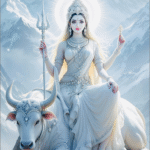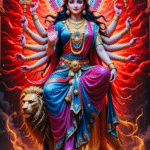8 Powerful Hindu Gods Whose Stories Will Inspire Your Life
Hinduism, one of the oldest religions in the world, is known for its rich pantheon of gods who embody virtue, strength, wisdom, and cosmic energy. Worship of Hindu Gods is not only about devotion but also about learning ethical values, understanding life’s purpose, and inspiring personal growth. This article explores the history, facts, timeline, significance, FAQs, impact on daily life, and societal importance of Hindu Gods in a human-friendly and relatable way.
- History of Hindu Gods
- Popular Hindu Gods and Their Significance
- 1. Lord Vishnu
- 2. Lord Shiva
- 3. Lord Brahma
- 4. Lord Ganesha
- 5. Lord Krishna
- 6. Lord Rama
- 7. Lord Hanuman
- 8. Lord Kartikeya
- Timeline of Hindu God Worship
- Significance of Hindu Gods
- FAQs About Hindu Gods
- Impact on Daily Life
- Observance and Wishing
- Conclusion: Why Hindu Gods Matter
History of Hindu Gods
The worship of Hindu Gods has evolved over millennia, shaping Indian culture and philosophy:
Indus Valley Civilization (c. 3300–1300 BCE): Early seals and artifacts suggest proto-deities and ritual practices, indicating reverence for divine forces.
Vedic Period (c. 1500–500 BCE): Vedic texts introduced deities like Indra, Agni, Varuna, and Surya, representing natural forces and moral order.
Epic and Classical Period (c. 500 BCE–1200 CE): Hindu epics such as the Mahabharata and Ramayana popularized gods like Vishnu, Shiva, and Krishna, emphasizing dharma (righteousness) and devotion.
Puranic Era: Texts like the Bhagavata Purana and Shiva Purana codified stories of gods and their avatars, highlighting their roles in cosmic balance and moral guidance.
Medieval Period: Saints and philosophers, such as Adi Shankaracharya, Ramanuja, and Chaitanya Mahaprabhu, strengthened devotion through bhakti (devotion) and temple worship.
Modern Era: Hindu Gods continue to influence daily life, art, literature, festivals, and spirituality, inspiring millions worldwide.
Popular Hindu Gods and Their Significance
1. Lord Vishnu
Symbolism: Preservation, protection, and cosmic order.
Iconography: Depicted with four arms holding a conch, discus, mace, and lotus, often reclining on the serpent Ananta.
Significance: Protects righteousness (dharma) and guides humanity.
Observance: Worshiped during Vaikuntha Ekadashi, Janmashtami, and daily rituals.
2. Lord Shiva
Symbolism: Destruction, transformation, and meditation.
Iconography: Blue-skinned, with a third eye, crescent moon, and trident, often meditating or performing tandava.
Significance: Represents detachment, spiritual growth, and destruction of ignorance.
Observance: Worshiped on Maha Shivaratri and through daily puja and meditation.
3. Lord Brahma
Symbolism: Creation and knowledge.
Iconography: Four heads symbolizing knowledge of the four Vedas, holding scriptures and a rosary.
Significance: Creator of the universe, emphasizing wisdom and intellect.
Observance: Few temples, but revered in rituals and mythological stories.
4. Lord Ganesha
Symbolism: Wisdom, remover of obstacles, and new beginnings.
Iconography: Elephant-headed, holding modaks (sweets) and a noose.
Significance: Invoked at the start of any endeavor or festival to ensure success.
Observance: Celebrated during Ganesh Chaturthi, symbolizing prosperity and guidance.
5. Lord Krishna
Symbolism: Divine love, compassion, and dharma.
Iconography: Depicted playing the flute, often with Radha, and adorned with peacock feathers.
Significance: Teaches moral and spiritual lessons, especially through Bhagavad Gita.
Observance: Worshiped on Janmashtami and various festivals related to his life.
6. Lord Rama
Symbolism: Virtue, courage, and devotion.
Iconography: Depicted with a bow and arrow, often with Sita, Lakshmana, and Hanuman.
Significance: Embodies dharma, loyalty, and moral integrity.
Observance: Celebrated during Rama Navami and Diwali (return to Ayodhya).
7. Lord Hanuman
Symbolism: Devotion, strength, and courage.
Iconography: Monkey-faced, holding a gada (mace), often flying carrying a mountain.
Significance: Inspires loyalty, courage, and selfless service.
Observance: Worshiped on Hanuman Jayanti and in temples for protection and strength.
8. Lord Kartikeya
Symbolism: War, victory, and leadership.
Iconography: Depicted riding a peacock with six heads symbolizing wisdom and valor.
Significance: Guides discipline, courage, and moral victory.
Observance: Worshiped during Skanda Shashti, particularly in South India.
Timeline of Hindu God Worship
3300–1300 BCE: Proto-deities in the Indus Valley Civilization.
1500–500 BCE: Vedic Gods like Indra, Agni, and Varuna dominate worship.
500 BCE–200 CE: Epics and Puranas popularize Vishnu, Shiva, and other deities.
200–1200 CE: Development of temple culture and bhakti movements.
Medieval Period: Saints strengthen devotion and philosophical understanding.
Modern Era: Hindu Gods remain central to festivals, rituals, and personal spirituality.
Significance of Hindu Gods
Hindu Gods are central to spiritual, moral, and cultural life:
Spiritual Guidance: Teach principles of dharma, karma, and devotion.
Moral Inspiration: Provide ethical frameworks through mythological stories.
Cultural Preservation: Influence temples, art, literature, and festivals.
Personal Growth: Encourage self-discipline, courage, and introspection.
Social Harmony: Inspire community participation, charity, and unity.
Problem-Solving: Invoke deities like Ganesha for removal of obstacles.
Global Influence: Hindu Gods inspire art, philosophy, and spirituality worldwide.
FAQs About Hindu Gods
Q1: Why are there so many Hindu Gods?
A1: Hinduism views divinity as one ultimate reality (Brahman) expressed in multiple forms, each symbolizing different cosmic functions and human values.
Q2: How do gods influence daily life?
A2: Through rituals, prayers, meditation, festivals, and moral guidance, gods shape personal and social behavior.
Q3: Are Hindu Gods worshiped differently in various regions?
A3: Yes, regional traditions influence rituals, festivals, and iconography.
Q4: Can anyone worship Hindu Gods?
A4: Absolutely. Worship is inclusive, transcending caste, gender, and nationality.
Q5: Do Hindu Gods have symbolic meanings?
A5: Yes, each god represents cosmic principles, moral values, and human virtues.
Impact on Daily Life
Hindu Gods influence personal, cultural, and societal dimensions:
Ethical Living: Teach truth, honesty, and compassion.
Stress Relief: Prayer and meditation foster inner calm and resilience.
Cultural Engagement: Participation in festivals strengthens community and social bonds.
Inspiration: Stories of courage, wisdom, and devotion inspire personal growth and life purpose.
Art and Literature: Gods influence music, dance, poetry, and visual arts.
Observance and Wishing
Hindu Gods are celebrated through rituals, prayers, and festivals:
Diwali: Worship of Lakshmi and Ganesha, wishing prosperity and success.
Navratri: Devotion to Durga and forms of Shakti, symbolizing victory over evil.
Janmashtami: Celebration of Lord Krishna’s birth, inspiring devotion and love.
Rama Navami and Hanuman Jayanti: Encourage moral and spiritual inspiration.
Daily Practices: Offerings, prayers, and meditation invite divine blessings and guidance.
Conclusion: Why Hindu Gods Matter
Hindu Gods are more than mythological figures; they are symbols of ethical living, spiritual wisdom, and societal harmony. Worshiping Hindu Gods encourages:
Inner Strength and Courage
Knowledge and Intellectual Growth
Moral Guidance and Ethical Choices
Cultural Preservation and Social Unity
Spiritual Awareness and Purposeful Living
By understanding and celebrating Hindu Gods, individuals can navigate challenges with wisdom, live virtuously, and foster community bonds, making their stories timeless sources of inspiration and guidance.
Quick Recap: 8 Powerful Hindu Gods
Vishnu – Preservation and protection
Shiva – Transformation and meditation
Brahma – Creation and knowledge
Ganesha – Wisdom and obstacle removal
Krishna – Divine love and dharma
Rama – Virtue and courage
Hanuman – Devotion and strength
Kartikeya – Valor and leadership








